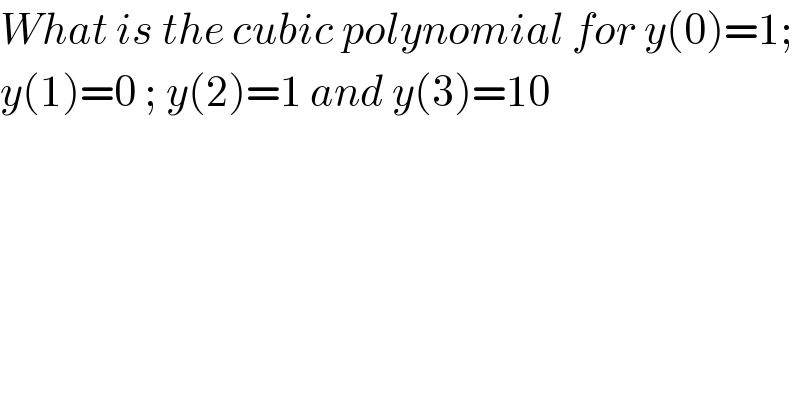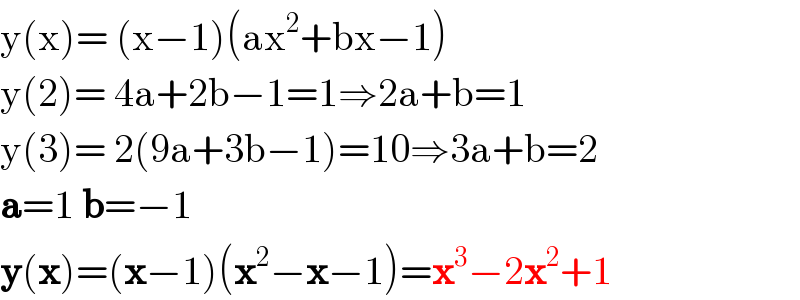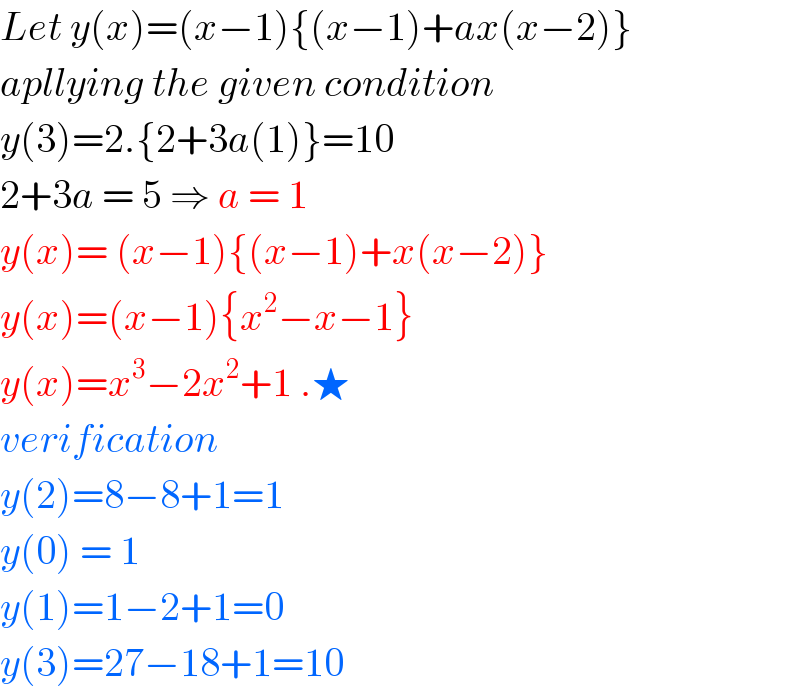
Question and Answers Forum
Previous in Relation and Functions Next in Relation and Functions
Question Number 105735 by bobhans last updated on 31/Jul/20

Commented by PRITHWISH SEN 2 last updated on 31/Jul/20

Answered by bemath last updated on 31/Jul/20

Answered by floor(10²Eta[1]) last updated on 31/Jul/20
![y(0)=1⇒y(x)=a(x)(x)+1 y(1)=a(1)+1=0⇒a(1)=−1 ⇒a(x)=b(x)(x−1)−1 ⇒y(x)=[b(x)(x−1)−1]x+1 y(2)=[b(2)−1].2+1=1⇒b(2)=1 ⇒b(x)=c(x)(x−2)+1 ⇒y(x)=[[c(x)(x−2)+1].(x−1)−1]x+1 y(3)=[[c(3)+1].2−1].3+1=10⇒c(3)=1 ⇒c(x)=1 (constant bc y(x) is cubic) ⇒y(x)=[(x−1)(x−1)−1].x+1 y(x)=[x^2 −2x].x+1 ⇒y(x)=x^3 −2x^2 +1](Q105779.png)
